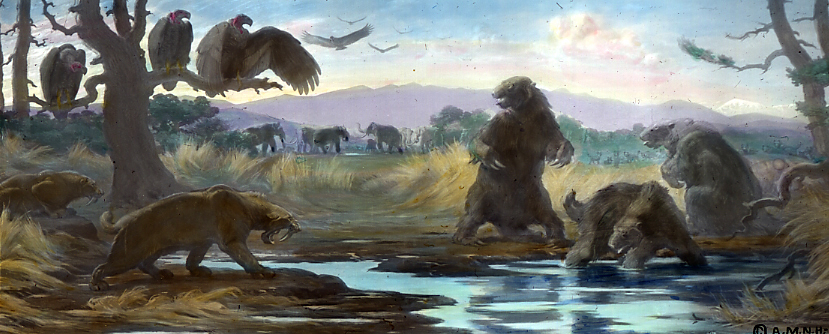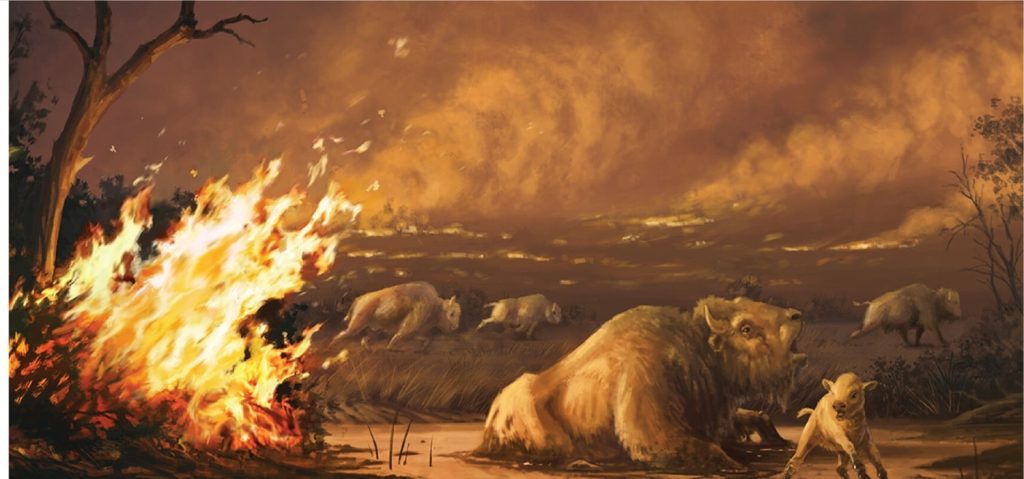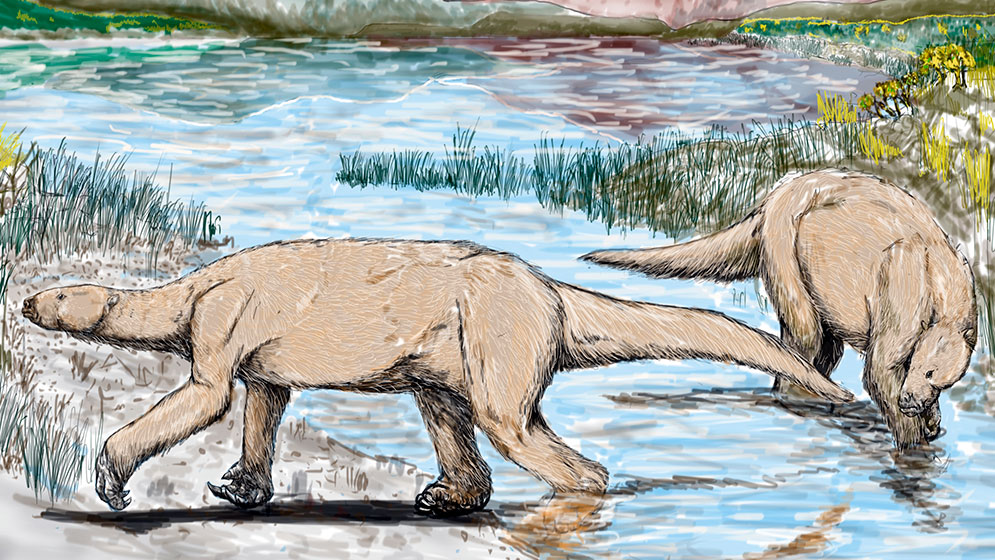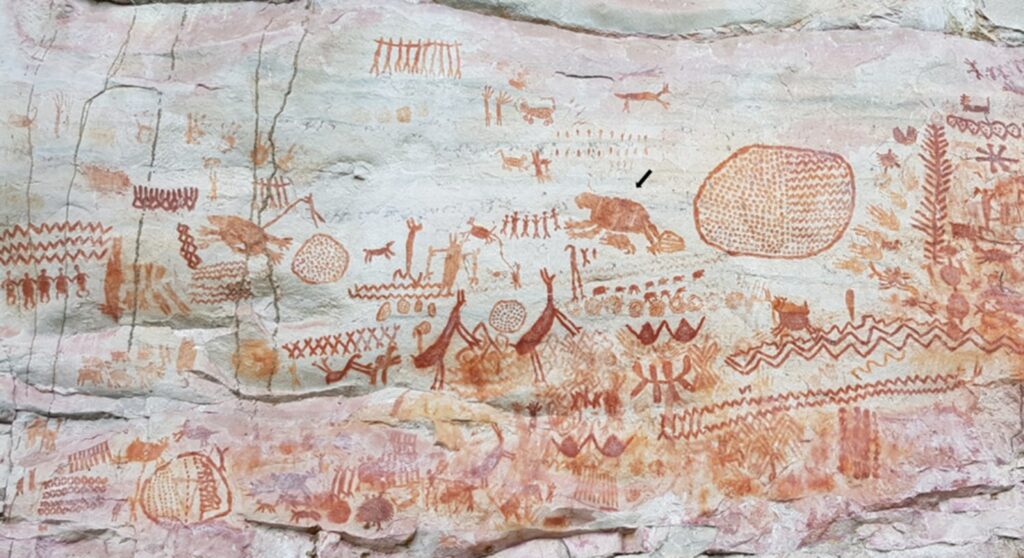Resurrecting giant ground sloths with Augmented Reality
For a chance to picture what the prehistoric Shasta ground sloth may have looked like, virtual and augmented reality may be our best bet.
Ice Age giants such as mammoths, mastodons, giant beavers, saber-toothed cats, and dire wolves once roamed the American continent with giant ground sloths. But around 10,000 years ago, after the end of the last Ice Age, America’s impressive megafauna went extinct.
It’s not known how exactly these species met their end, but some scientists now argue that it was a combination of both climate change and human hunting.
These prehistoric animals have long-captured the imaginations of scientists, artists, and the general public. They have been depicted at museums and in popular media for many decades — often with a bit of artistic license thrown in!
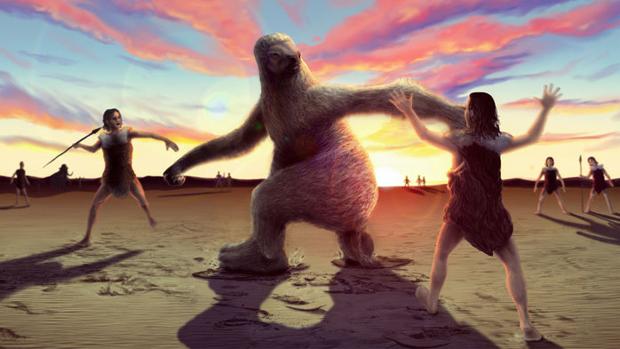
Paleoart and Augmented Reality as an educational tool
Understanding the importance of paleoart as an educational tool — and that much of the paleoart that exists in popular culture is not based on hard paleontological evidence — a team of scientists have sought to digitally recreate these long-departed Ice Age creatures in a scientifically accurate way.
In their paper, La Brea Tar Pits Paleoart published in Palaeontologia Electronica, the team laid out the design of 13 Ice Age animals, citing their scientific methods and encouraging their research to be discussed, peer reviewed, and referenced for future work — something not before seen in paleoart.

“We think paleoart is a crucial part of paleontological research,” said Dr. Matt Davis, the study’s lead author. “That’s why we decided to publish all the scientific research and artistic decisions that went into creating these models. This will make it easier for other scientists and paleoartists to critique and build off our team’s work.”
The team created reconstructions of Ice Age animals that were found in the La Brea Tar Pits in Downtown LA — an important site for paleontologists owing to the incredible level of preservation of the fossilized plants and animals found there. Almost as well known are the models and sculptures that have been created for the tar pits to convey to the public what it might have looked like during the Ice Age.
Yet these sculptures, argue the authors of the paper, are scientifically inaccurate. They point out that Harlan’s ground sloth has been reconstructed with a worryingly inconsistent number of toes! Such inaccuracies often seen in paleoart not based in grounded science can lead to, and perpetuate, misconceptions about Ice Age animals.

The Shasta’s sloth
In digitally recreating Ice Age animals found at La Brea Tar Pits, the team analyzed fossils of the extinct animals, and in some cases, the closest living relatives of the extinct species were used as a reference. The morphology and behavior of living animals such as the Przewalski’s horse, polar bear, and African lion were coded into the metaverse Ice Age animals.
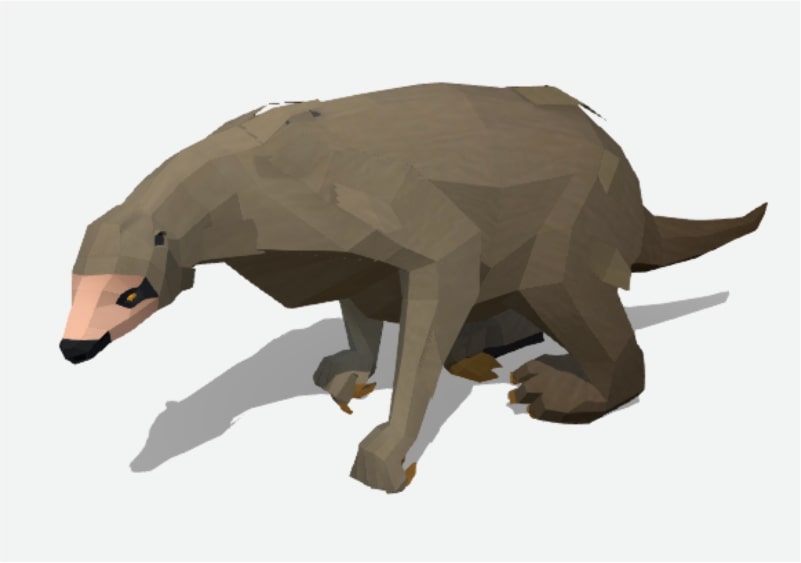
As there are no close living relatives of the Shasta ground sloth, the team based the AR version on a fossilized specimen that was found preserved in guano inside a fumarole in Aden Crater, New Mexico. The bones of this animal were held together by preserved ligaments and tendons, giving the team a very accurate view of the sloth’s morphology. Incredibly, the sloth was so well preserved that it still had patches of skin, which included 45mm-long pale yellow hair. The digital Shasta ground sloth’s face was given coloration common to the modern three-toed sloths.
The Harlan’s ground sloth
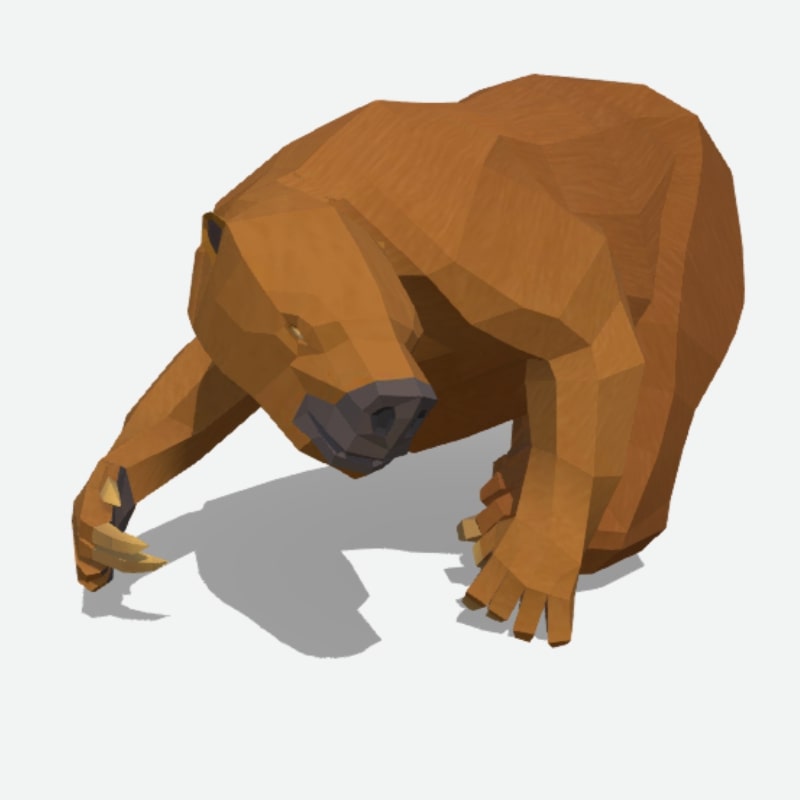
Harlan’s ground sloth was also brought to life in AR and VR. As there was no preserved soft tissue found for this animal, the scientists looked to the mylodon, a ground sloth of similar size and shape to the Harlan’s ground sloth. A mylodon specimen was found with patches of skin containing reddish-blond fur, which the team decided to give to their digital Harlan’s ground sloth.
Meet the Ice Age sloths with your phone!
If you want to meet the Ice Age ground sloths along with their prehistoric neighbors in AR, you can experience them via Snapchat by scanning the below codes; via Instagram by searching in the Effects gallery, or via the SketchFab app.
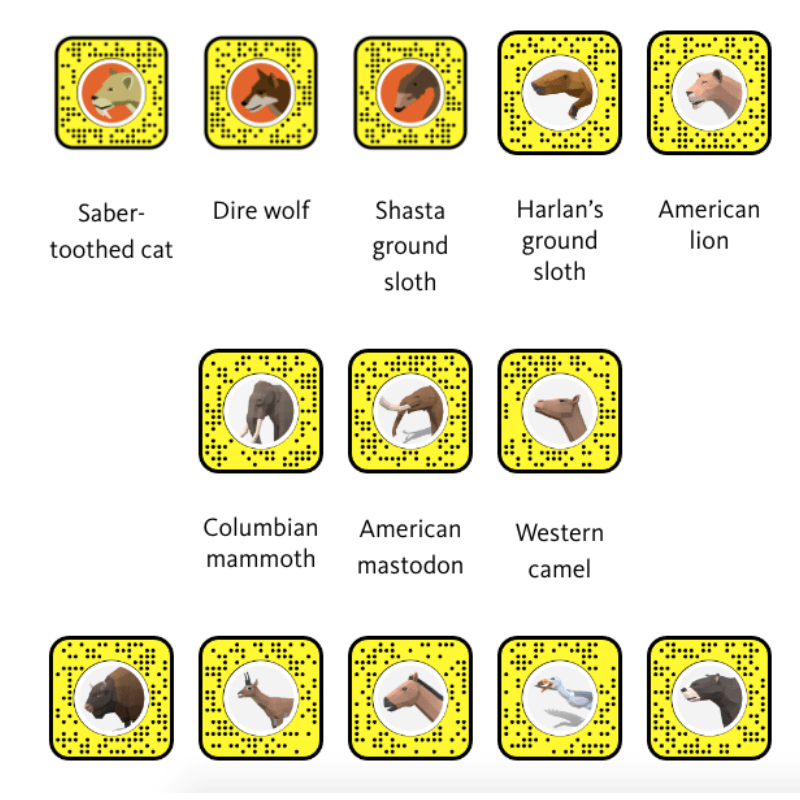
You’ll meet the animals in deliberately low-definition so that they can run on phones. This also gives scientists the opportunity to refine features as fossil data continues to be unearthed.
William Swartout, CTO at California Institute for Creative Technologies and co-author of the study explains: “The innovation of this approach is that it allows us to create scientifically accurate artwork for the metaverse without overcommitting to details where we still lack good fossil evidence.”
-Samantha Stocks
SloCo Collaborator

